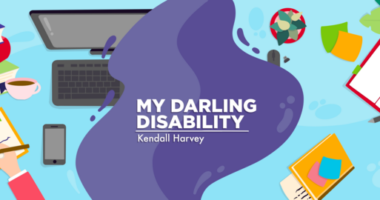The importance of finding hope with FA, even after facing setbacks
Holding on to hope amid the ups and downs of Friedreich's ataxia treatment

Note: This column describes the author’s and interviewee’s own experiences with Skyclarys (omaveloxolone). Not everyone will have the same response to treatment. Consult your doctor before starting or stopping a therapy.
Hope is crucial for those in the Friedreich’s ataxia (FA) community. For me, facing a rare degenerative disorder festered into bitterness, causing me to curse the unfairness of it all.
After years of this outlook, I wondered if a productive life with FA was possible. Could I advance the development of a treatment or cure or, just as necessary, help someone in the FA community feel less alone?
I couldn’t accomplish those goals in my bitterness, so I decided to look toward a better future. I needed to have hope.
Maybe you do, too.
Most people might agree with having hope, but my views seem less conventional in practice. For starters, I don’t believe hope and unquestioning optimism are identical. Therefore, looking at every facet of life with FA, even the uncomfortable ones, is necessary. As I wrote in 2019, FA teaches the same lesson as “Moby-Dick; or, The Whale”: how to look at life’s painful elements and still find hope.
To me, hope isn’t a dreamy princess in a tower, but a black-eyed punk, spitting out a tooth and getting up again after being knocked down.
My hope tested
Clinical trials for DT-216, an investigational FA drug from Design Therapeutics, have officially been delayed, as announced in an Aug. 14 press release. Instead of advancing DT-216 into a Phase 2 trial, the company plans to reformulate the drug and begin a new Phase 1 trial in the second half of 2024.
The news devastated me, as I was in the Phase 1 trial and had hoped to participate in an open-label extension of the drug. I spiraled into hopelessness after reading articles about how the delay triggered the company’s stock drop. (Even almost 20 years after my FA diagnosis, some setbacks hurt like a fresh cut.)
Thankfully, my brother at work yelled at me until I saw beyond my catastrophizing and self-pitying. Even though a delay doesn’t feel like a little victory, maybe the improved formula will make it one.
Others’ hopes tested
Many readers already know that the U.S. Food and Drug Administration approved Skyclarys (omaveloxolone), the first and only treatment for FA, on Feb. 28. As of this writing, I’ve been taking it for a month, and I believe it’s slowing my disease progression. I’m grateful to have access to this medicine.
However, my good friend and fellow FAer Brian Haffey had a different experience after taking Skyclarys. I asked him to share his story, but please note that columns on Friedriech’s Ataxia News focus on personal experiences and should never be considered medical advice. The symptoms Brian describes aren’t officially determined to be side effects of Skyclarys. Always consult medical professionals before making decisions about your healthcare and treatment.
ML: What changes did you notice after starting Skyclarys?
BH: I felt a warm sensation in the first five days, and my muscles were noticeably looser. Living in New York most of my life, cold weather normally stiffened me, making movements harder. Since taking the medicine, I noticed the opposite — my actions felt smoother.
It was very encouraging, but unfortunately, after about a week, I noticed I was very on edge with a short fuse. This feeling stuck out to me since I’ve never had anxiety or anything like that. Soon I noticed a tightness in my chest. These quickly became all-day symptoms. Also, I started sweating profusely doing everyday activities, and I began experiencing muscle cramps and spasms to a degree I never had before.
What message do you have for FA patients who hope to take Skyclarys?
Be optimistic. I recently spoke to two people who have seen significant improvements while on it. One saw improvements in his mobility and energy, and the other in his speech (which was apparent to me from the last time we spoke a month ago). After my experience, to hear theirs was super uplifting. Knowing [Skyclarys] is helping others is rewarding in itself.
Do you still have hope?
As long as I am breathing, I have hope and a lot of fight in me. In my journey, I believe the best thing I can do to fight FA is weight training; those adverse reactions just upped that commitment. I wake up every morning at 5:30 and go to the gym to kick my butt 110%. FA puts us on a down escalator for the rest of our lives, and we must consciously put in the effort every day, or we just go backward. It gets exhausting, frustrating, depressing, and everything in between. But the FA fight isn’t going anywhere, so there can be only one option for me: Get up every day and give it hell!
ML: Sometimes hope looks like getting back up after a delayed clinical trial or discouraging symptoms and returning to the fight. Believe in hope. Give FA hell.
Note: Friedreich’s Ataxia News is strictly a news and information website about the disease. It does not provide medical advice, diagnosis, or treatment. This content is not intended to be a substitute for professional medical advice, diagnosis, or treatment. Always seek the advice of your physician or another qualified health provider with any questions you may have regarding a medical condition. Never disregard professional medical advice or delay in seeking it because of something you have read on this website. The opinions expressed in this column are not those of Friedreich’s Ataxia News or its parent company, Bionews, and are intended to spark discussion about issues pertaining to Friedreich’s ataxia.








Leave a comment
Fill in the required fields to post. Your email address will not be published.